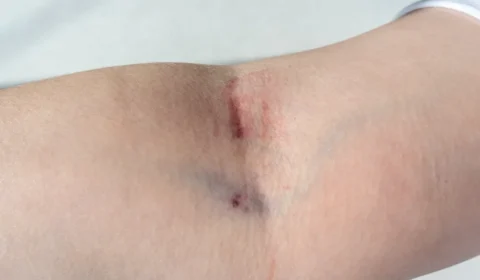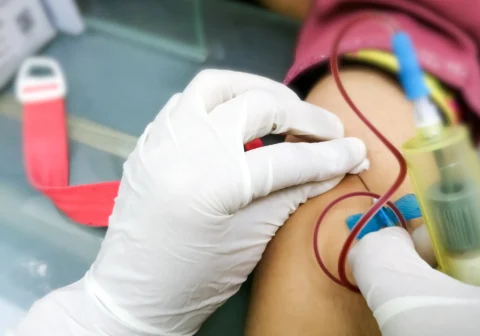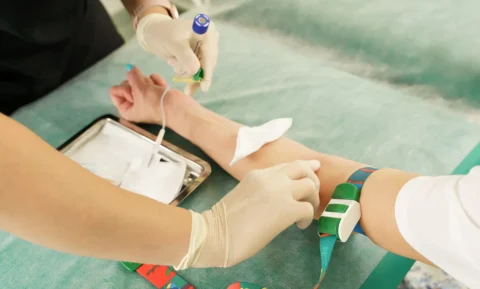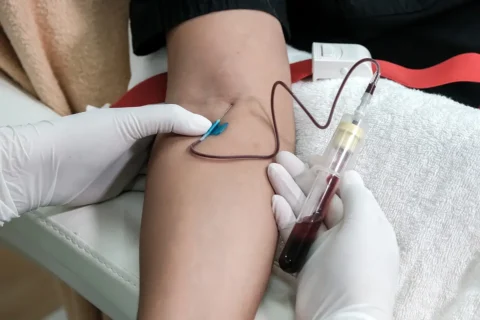Butterfly needles are a handy tool for giving intravenous medications and fluids. The flexible tubing and thin needles are gentler on delicate veins compared to standard straight needles. But don’t let the graceful name fool you – good technique and care are still needed when using these needles to keep patients safe.
This guide lays out the key steps and tips for giving shots skillfully with butterfly needle systems. We’ll go over how to choose the right veins, insert the needle properly, and administer drugs in the right way.
Following clinical best practices helps ensure you can access veins without a hitch and deliver medications smoothly. When used correctly, butterfly needles make giving IV drugs less painful for patients and easier for healthcare staff.
Understanding Butterfly Needles
What is a Butterfly Needle and When is it Used?
A butterfly needle, also known as a winged infusion set, is a type of needle commonly used in healthcare settings. With its flexible, wing-like tabs and thin, small gauge needles, it’s designed for comfort and precision.
Healthcare providers often use these needles for blood collection, blood sample testing, and administering drugs.
Why Would a Healthcare Provider Choose a Butterfly Needle Over a Straight Needle?
In contrast to straight needles, butterfly needles are easier to handle and can access small or difficult veins more efficiently, resulting in less discomfort for patients. However, they are typically more expensive, with sources citing their high production costs.
Here are the revisions to the section:
Preparing for Injection
How Do Healthcare Providers Prepare for an Injection with a Butterfly Needle?
Proper sterile technique is crucial when preparing for an injection with a butterfly needle. The provider should wash their hands, wear gloves, and avoid touching the needle or injection site. All equipment, including the needle, syringe, and alcohol pads should be sterile and fresh from sealed packaging. Medications should be drawn up carefully to prevent contamination.
How Is the Injection Site Prepared and Chosen?
The injection site should be accessible with viable veins and minimal existing damage or scars. Common sites include the forearm, hand, wrist, and antecubital fossa. Factors like vein size, integrity, and patient comfort should guide site selection.
Once chosen, the skin should be cleaned with an antiseptic solution using a sterile swab or alcohol wipe in a circular motion from the center outward. Allow the area to fully dry before injecting. Proper site rotation for repeated injections can help prevent complications like scarring or neuropathy according to clinical guidelines.
The Injection Process

Preparing for Insertion
- Gather sterile supplies – butterfly needle, alcohol wipes, tape, syringe, etc.
- Select an appropriate vein based on size, visibility, and patient comfort. The forearm is a common site.
- Apply a tourniquet above the insertion site to make the vein more visible.
- Clean the skin with an alcohol wipe in a circular motion moving outward. Allow to fully dry.
Insertion Process
- Remove the needle cover and ensure the bevel is facing up.
- Anchor the vein by stretching the skin below the insertion site.
- Hold the wings together between the thumb and index finger. The textured grip should face down.
- Insert the needle at a shallow 10-30 degree angle into the vein.
- Once sufficient flashback blood is seen in the hub, lower the needle angle and advance it gently along the vein.
- Release the wings so they lie flat on the skin and secure them with sterile tape.
- Attach the syringe and slowly administer the medication.
Post-Injection Steps
- When finished, remove the tape and withdraw the needle.
- Immediately apply pressure to the site with gauze to prevent bleeding.
- Dispose of the needle safely in a sharps container.
- Monitor for signs of infiltration like swelling.
Proper butterfly needle insertion technique is crucial for patient comfort and safety. With practice, it can be done smoothly and effectively.
How Do Healthcare Providers Ensure the Drug is Properly Administered?
Once the needle is in place, healthcare providers must carefully monitor the patient’s response during and after the injection. This includes controlling the amount of drug administered and the rate at which it is delivered.
Powerful drug formulations, in particular, may be administered in incremental doses to ensure safety and efficacy.
Aftercare and Safety Measures
What Steps Are Taken After the Injection is Complete?
After the injection, the needle should be carefully removed and disposed of in a sharps disposal container. The injection site should be cleaned with a cotton ball or cotton wool and monitored for any reactions.
Make it a habit to use a new, sterile cotton ball or cotton wool for each patient to prevent cross-contamination.
What Safety Measures are Important During this Process?
Safety should be prioritized during the entire process. Measures such as needlestick injury prevention, biohazard waste handling, and infection control must be strictly adhered to.
- Needles and syringes should never be reused, even if the needle is changed. A new sterile needle and syringe should be used for each injection.
- Proper sharps disposal in puncture-resistant containers located near the point of use is critically important.
- Personnel should be properly trained in injection safety procedures and the prevention of needlestick injuries.
- Any needlestick injuries should be immediately reported to initiate proper follow-up care.
- Personal protective equipment such as gloves should be used during the procedure and while handling sharps waste.
Furthermore, the patient should be educated on potential complications and safe practices to follow after the injection.
Troubleshooting Common Issues with Butterfly Needle Injections
Blocked Needle
- Check for kinks in the tubing that may obstruct flow. Straighten out the tubing.
- Make sure the needle is not inserted at too steep of an angle or against the vein wall. Pull back slightly and reposition.
- The needle tip may be blocked if the vein has collapsed around it. Gently pull the needle back or remove it and insert it into a new site.
Blown Vein
- This occurs when the vein ruptures due to too much pressure during injection. Apply firm pressure with gauze to stop bleeding. Do not reuse the site.
- Slow the rate of injection next time and ensure proper needle placement and angle.
Difficulty Inserting
- Apply a warm compress to the site for 2-3 minutes to dilate the vein.
- Have the patient dangle their arm to increase blood flow.
- Try a different insertion site. The antecubital veins or back of the hand work well.
- Use ultrasound guidance if available to visualize the vein.
- Bevel the needle up to puncture smoothly and avoid double wall punctures.
- Pull the skin taut over the vein to anchor and straighten it.
Adhering to Standards of Practice
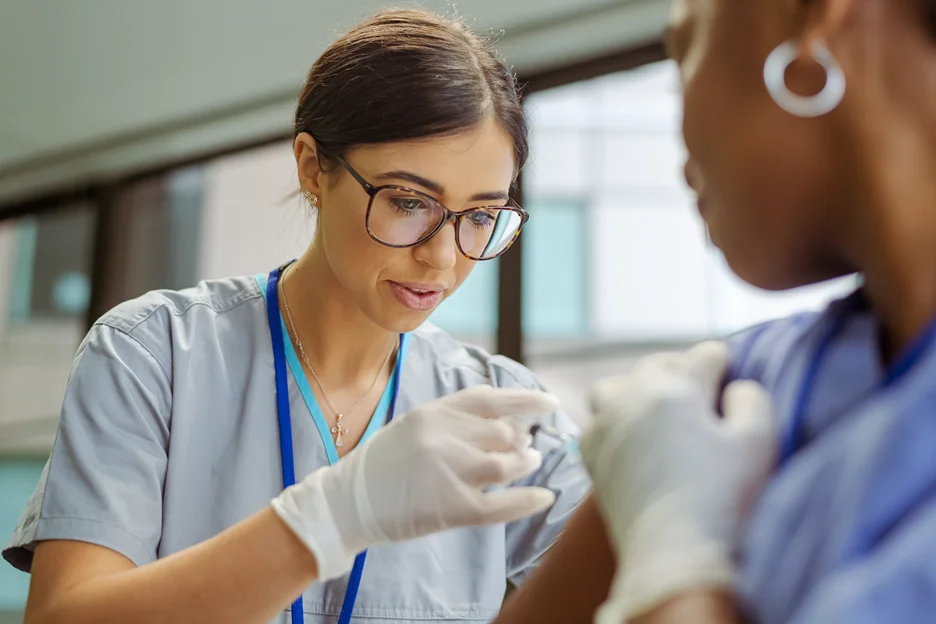
Documentation
- Document informed consent for the procedure.
- Record the drug name, dose, route, site, time, and any reactions in the patient chart.
- Document the condition of the injection site before and after.
- Chart the size of the needle and any assistance provided.
Consent
- Explain the risks/benefits of the injection and ensure the patient provides informed consent.
- For incompetent patients, consent may need to be obtained from a substitute decision-maker.
Scope of Practice
- Perform injections only within your professional scope of practice and with proper training.
- Know institutional policies and protocols for injectable medications.
Patient Safety
- Adhere to aseptic technique during injection preparation and procedure.
- Prevent needlestick injuries by disposing of sharps properly in a puncture-proof container.
- Monitor the patient after injection for any adverse effects.
Patient Privacy
- Maintain patient privacy by using drapes and only exposing the necessary injection site area.
Regulations
- Follow all occupational health and safety regulations for handling injectable agents.
- Ensure proper storage and preparation of medications according to pharmaceutical regulations.
At the end of the day, knowing how to properly give injections with butterfly needles is vital for any clinician. Doing so only serves as a boon for those giving and receiving shots.
If you’re looking to take your practice to the next level with top-notch supplies, Face Med Store has you covered. We’ve got it all – injectables, medical devices, skin care, syringes, needles, and more. You name it, we stock it. We also provide online training for the latest techniques in aesthetics, cosmetics, and medical tools.
Our mission is to help healthcare pros stay at the cutting edge. Whether you want to broaden your services or enhance your equipment, our top-tier products and training will elevate your practice to new heights.
Soar higher in patient care with Face Med Store as your partner!
